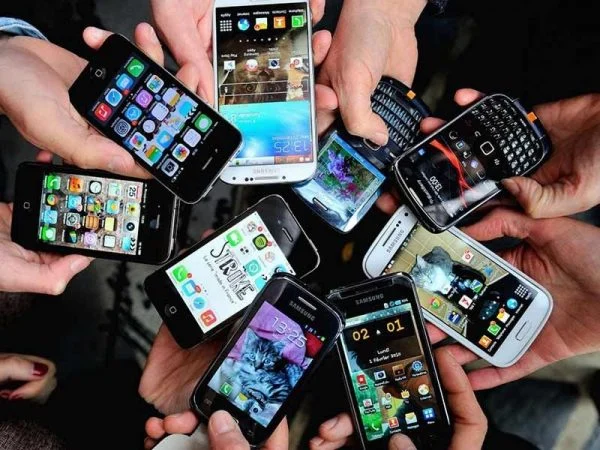VOICE AIR MEDIA News Update
Today, wherever you turn, you see people, both young and old, fiddling with their smartphones. This is because smartphones have become an important part of people’s lives.
People use them for communication, taking pictures, saving documents on the cloud, internet browsing and even as a power bank to charge other phones.
Every day, people make decisions about which smartphone to buy because there are many brands available in the market. These devices are no longer just for making calls or receiving SMS messages as people can run aspects of their day-to-day life through their phones. As a result, it can be very difficult to know which smartphone is ideal for you as an individual.
An engineer based in Lagos, Mr Paul Nwabueze revealed that before choosing a smartphone, one should get his or her priorities straight. He noted that a smartphone is basically a computer you carry around in your pocket that allows you to perform various tasks all day and all year round. He stated that these tasks can be anything from ensuring that you are able to remain connected with the outside world while at work or while sitting alone at home.
Nwabueze stated that with the wide variety of smartphones available in the market, it is not easy to decide which one to pick, adding that it is a tough process deciding the one that may suit your needs best.
He outlined 10 things you need to consider before you go shopping for a new smartphone:
Processor
The processing power of a smartphone varies from one device to another depending on several factors such as OS version, UI, bloatware and more. If you are a heavy user who needs to edit images, videos, and documents online, play heavy games, stream videos or often use apps in split screen mode, then smartphones with Qualcomm Snapdragon 652 or Snapdragon 820/821 should make multitasking fluid for you. Light users will be happy with handsets that come with MediaTek processors.
Battery
Battery life is one of the most important features to consider when choosing a new smartphone. Do not be fooled: a higher number of mAh does not amount to more and more battery life, or to a longer battery life cycle. The factors that come into play are different and it’s worth knowing them.
For example, you should consider that screens with a higher resolution consume more energy, while the latest processors optimize battery life. Then there are display refresh rates and quick charging technology to think about. Rather than just looking at tech specs, it’s best to check out reviews and benchmark results to know how all these factors perform when combines in a single device. At the moment, 4,000 mAh seems to be the standard. The battery usage differs from user to user depending on the way he or she uses the phone. If you are a heavy user and work on apps, play games, stream videos and more, then go for a smartphone with at least 3500mAh battery or above. If you are an average or light user, a handset with 3000mAh battery would be good enough to run for a full day.
Security/extra features
Most smartphones produced recently come with extra security features such as fingerprint sensors or even iris sensors. These are not just to lock or unlock a handset but they also serve as a password to access certain files, documents or apps. While a fingerprint sensor can be found in even Rs 5,000 smartphones, devices with iris scanners are still few. It’s preferable to buy a smartphone with these extra security features since most people have personal information stored on their handsets these days, which they don’t want people to see.
Storage
A large part of the smartphone’s storage is taken away from the OS and the apps the device comes pre-installed with. A 16GB/32GB/64GB or more don’t really come with the exact mentioned space. If you like to keep less number of apps on your devices, you can go for 32GB storage. Users who like to keep a larger number of apps can go for 64GB or 128GB variants. You can also buy a 16GB model that supports a micro SD card as well.
User interface/OS version
User interface and the OS version too are key factors to consider when choosing a smartphone. These are the interfaces that one would have to interact with each time to access anything, so it should be easy and simple.
For the most basic and pure Android experience, you can buy Android devices. However different interfaces like ZenUI, Xperia UI, TouchWiz, EMUI and others offer more effective features to sort applications and more options in styles the company thinks users would find more friendly.
However, smartphones by OEMs also come with bloatware and certain apps that buyers probably won’t use ever. So, it is recommended that one tries the handset before picking one and buying one.
Headphone jack/USB port
Ports can be an important factor to consider when you are shopping for a new phone. Although both micro-USB and USB Type-C ports are available in smartphones these days, it is preferable to switch to USB Type-C not just because it is easy to plug in but because it also future-proof. Many smartphones have started incorporating the new standard to meet users’ needs. Few brands have started ditching the 3.5mm headphone jack as well but there might be good two years before all the OEMs completely switched to USB Type-C-based headphones jacks.
Camera
All over the world, smartphone manufacturers are starting to pay more attention to camera quality and features lately, and that’s a great thing for phone users. The number of megapixels, hybrid autofocus, optical stabilization, manual modes, special effects, and special selfie features make smartphones appear and function more like digital cameras.
However, intending smartphone buyers should know that a phone having a higher number of megapixels does not mean that the smartphone camera is better. Several specifications such as camera aperture, ISO levels, pixel size, autofocus and more are essential as well. A 16MP rear camera does not necessarily have to be better than a 12MP camera. The same theory goes for the front-facing camera.
A higher number of pixels means that the size of the image is bigger, which becomes sharper when seen on a small screen. A photographer enthusiast might want a camera with a 12 or 16MP sensor at a cheaper price or a lower aperture for speedy shots even in low lights. A casual shooter can go by even with an 8MP 0r 12MP camera with f/2.0-f/2.2 aperture.
Build quality
A phone’s build is all about the durability of a smartphone. The entire handset market is largely divided into two types of builds – namely metal and plastic. There are some phones that even have glass-coated panels, but those are very limited. If you are one of those prone to dropping your smartphone, it’s advisable to go for a metal or a plastic-built handset. These phones can sustain drops from 2-3 feet, while glass-based handsets are sure to shatter.
Audio/speakers
Speakers and the quality of audio coming out of it can be an important parameter for those who rely on heavy video streaming or videoconferences. If you like entertainment on the go, buy a handset that has front-facing speakers. This gives clear sound even while holding the smartphone in landscape mode. If you don’t indulge in video streaming or video conferencing much, then a regular handset with bottom-firing speakers should be just fine. Those with speakers placed at the back are also fine.
Display
The size and resolution of the display depend on how you use your smartphone. If you often stream videos, edit photos or videos, or download and view movies, then a smartphone display ranging from 5.5-inch to 6-inch, full-HD or QHD resolution should be good enough for you. Anything larger than a 6-inch display not just makes the handset extra bulky, but also difficult to carry around. If you are a regular user and largely use the phone for checking emails, chatting and browsing social media apps, then anything from 5-inch to 5.5-inch HD or full-HD display handsets is perfect.
Lastly, if you have a limited budget, what you should definitely put first on your list of considerations before buying a new phone is the price. What do you want to spend on your next smartphone? Is it worth it to use all your salary to purchase a phone or is it appropriate to limit yourself and choose something cheaper but equally powerful and in tune with the times? The choice is yours, but be aware that for any price range, there are some devices that are better than others.








